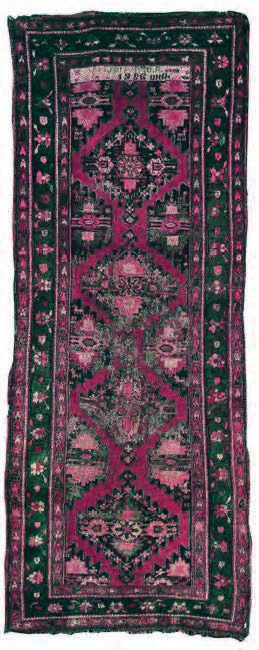Armenian Rugs: A Fusion of Cultures
Los Angeles Home of Rugs on Apr 16th 2024
Armenian rugs, woven carpets that emerged after the settlement of Armenians in certain regions of Iran during the Safavid era, have been crafted by Iranian Armenians while preserving the authentic characteristics of Iranian rugs. Influenced by the ancient rug-weaving culture of Armenia and under the sway of Iranian rug-making traditions, Armenian rugs serve as a testament to the deep cultural ties between Armenians and Iranians.
The cultural exchanges between Armenians and Iranians, rooted in ancient history, have found expression in various aspects of life, including their arts. Even before the arrival of Armenians in Iran during the Safavid era, rug weaving was prevalent among both Iranian and Armenian communities. It appears that Armenian rugs, more than just preserving the distinctive features of Armenian rug-making, reflect the authentic Iranian rug-making culture. Thus, a comparative study between these two types of rugs in terms of design, color, and weaving techniques is essential to uncover their shared elements, divergences, and mutual influences.
Iranian rug-making is a cherished national art with diverse subcategories, among which Armenian rugs hold a significant place. Armenian rugs in Iran are woven by Armenians who migrated to the country during the Safavid era, incorporating their own unique cultural elements while being influenced by the Iranian rug-making tradition, especially in regions neighboring their settlements. There exists an intriguing relationship between Iranian and Armenian rugs, which, without doubt, extends beyond recent centuries, such as the Safavid period, as some might believe. Evidence suggests that the connection between Armenian and Iranian rugs dates back even before the advent of Islam, as rug-making was already prevalent in Armenia. Moreover, remnants of Iranian rug motifs can be observed in Armenian rugs, indicating the historical ties between the two cultures.
It's noteworthy that the Republic of Armenia was under the rule of the Persian Empire not too long ago, and many traditional customs of these regions are still shared despite political and geographical divisions. Common design motifs and even intricate rug patterns can be found in both Iranian and Armenian rugs. For instance, shared motifs between Caucasus rugs and Persian tribal rugs or specific types of rug borders found in the Kufic border group serve as examples of mutual influences.
Considering the influence of Iranian rug-making traditions on Armenian rugs and the historical relationship between Iranian and Armenian rug-making, this study aims to explore whether Armenian rugs, despite their heritage in Armenian rug-making, embody the authentic culture of Iranian rug-making and feature distinctive weaving techniques different from those of Armenian rugs. Therefore, after providing historical backgrounds on Armenian and Iranian rugs, a comparative analysis will be conducted to uncover their shared elements, differences, and mutual influences in terms of design, color, and weaving techniques.
In conclusion, Armenian rugs represent a harmonious fusion of Iranian and Armenian rug-making cultures, reflecting the enduring cultural exchange between these two nations. Their shared motifs, weaving techniques, and historical connections serve as testaments to the rich tapestry of cultural heritage in the region, transcending political and geographical boundaries.
 |  |
|













